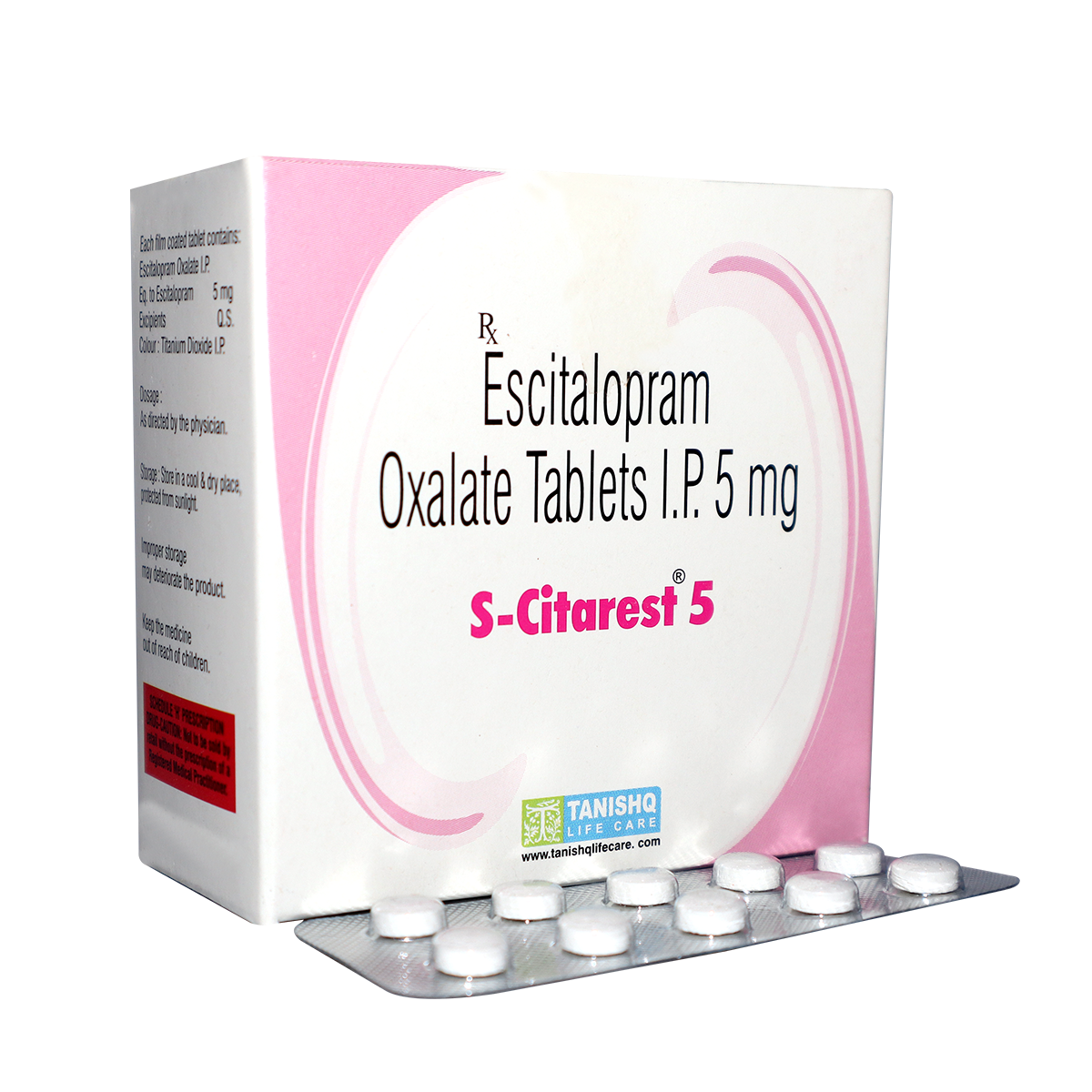
Escitalopram 5mg Tablet
Escitalopram is a Selective Serotonin Reuptake Inhibitor (SSRI) commonly prescribed for treating mood and anxiety disorders. It is known for its effectiveness in treating depression, generalized anxiety disorder (GAD), and panic disorder. Escitalopram works by increasing the levels of serotonin, a neurotransmitter that plays a key role in mood regulation.
- Recommended Usage
Indications
- Major Depressive Disorder (MDD): Escitalopram is often used to treat major depressive disorder (MDD) by regulating serotonin levels in the brain. It helps improve mood, energy, and overall well-being in patients suffering from depression.
- Generalized Anxiety Disorder (GAD): It is effective in treating generalized anxiety disorder, characterized by excessive and uncontrollable worry. Escitalopram helps reduce the intensity and frequency of anxiety symptoms.
- Panic Disorder: Escitalopram is prescribed to manage panic disorder, a condition marked by recurrent and unexpected panic attacks. It can help reduce the occurrence of these attacks and alleviate the anxiety that accompanies them.
- Social Anxiety Disorder: It is sometimes used to treat social anxiety disorder, helping individuals who experience significant anxiety in social or performance situations.
Dosage and Administration
The usual starting dose for adults is 10mg once daily. However, Escitalopram 5mg may be prescribed for individuals who are particularly sensitive to the medication or as a dose reduction in those who experience side effects with the standard dose.
Precautions
Allergic Reactions: Seek medical help if any allergic reactions occur, such as rash, swelling, or difficulty breathing.
Liver and Kidney Function: Escitalopram should be used with caution in individuals with liver or kidney dysfunction, as it is metabolized by the liver. Dosage adjustments may be necessary.
Suicidal Thoughts: Like all antidepressants, Escitalopram carries a black box warning about the increased risk of suicidal thoughts and behavior, particularly in children, adolescents, and young adults.
Pregnancy and Breastfeeding: Escitalopram is classified as Category C during pregnancy. This means that it should only be used if the benefits outweigh the risks. It can also pass into breast milk, so caution is advised for breastfeeding mothers.
Benefits
Effective Treatment for Depression: Escitalopram is one of the most commonly prescribed SSRIs for major depressive disorder. It helps to elevate mood and reduce feelings of sadness, hopelessness, and irritability.
Improves Anxiety Symptoms: Escitalopram is highly effective in reducing anxiety symptoms, including excessive worry, restlessness, and physical symptoms of anxiety such as tremors or heart palpitations.
Well-Tolerated: Escitalopram is generally well-tolerated compared to other antidepressants. It has a lower risk of causing side effects like sedation or weight gain, making it a popular choice for long-term treatment.
Product Category
- Anti Infective
- Injectables
- Pre Filled Syringe
- Immunosuppressants
- Anti Ulcerant/ppis
- Joint Care
- Enzymes
- Heamatinic Agents
- Antioxidant Multivitamins
- Laxatives
- Anti Alergic
- Corticosteroids & Combinations
- Anti Fungal
- Medicated Soaps
- Emollients and Moisturisers
- Face Care
- Puva & Sun Protectors
- Hair Care
- Anti Acne Preparation
- Analgesics Antipyretics & Anti Inflammatory
- Anti Spasmodic & Anti Emetic
- Expectorants Antitussives & Mucolytics
- Antidiarrheals
- Cardiac Drugs
- Antipsychotics
- Anti Epileptics
- Migraine
- Anti Dyspetic
